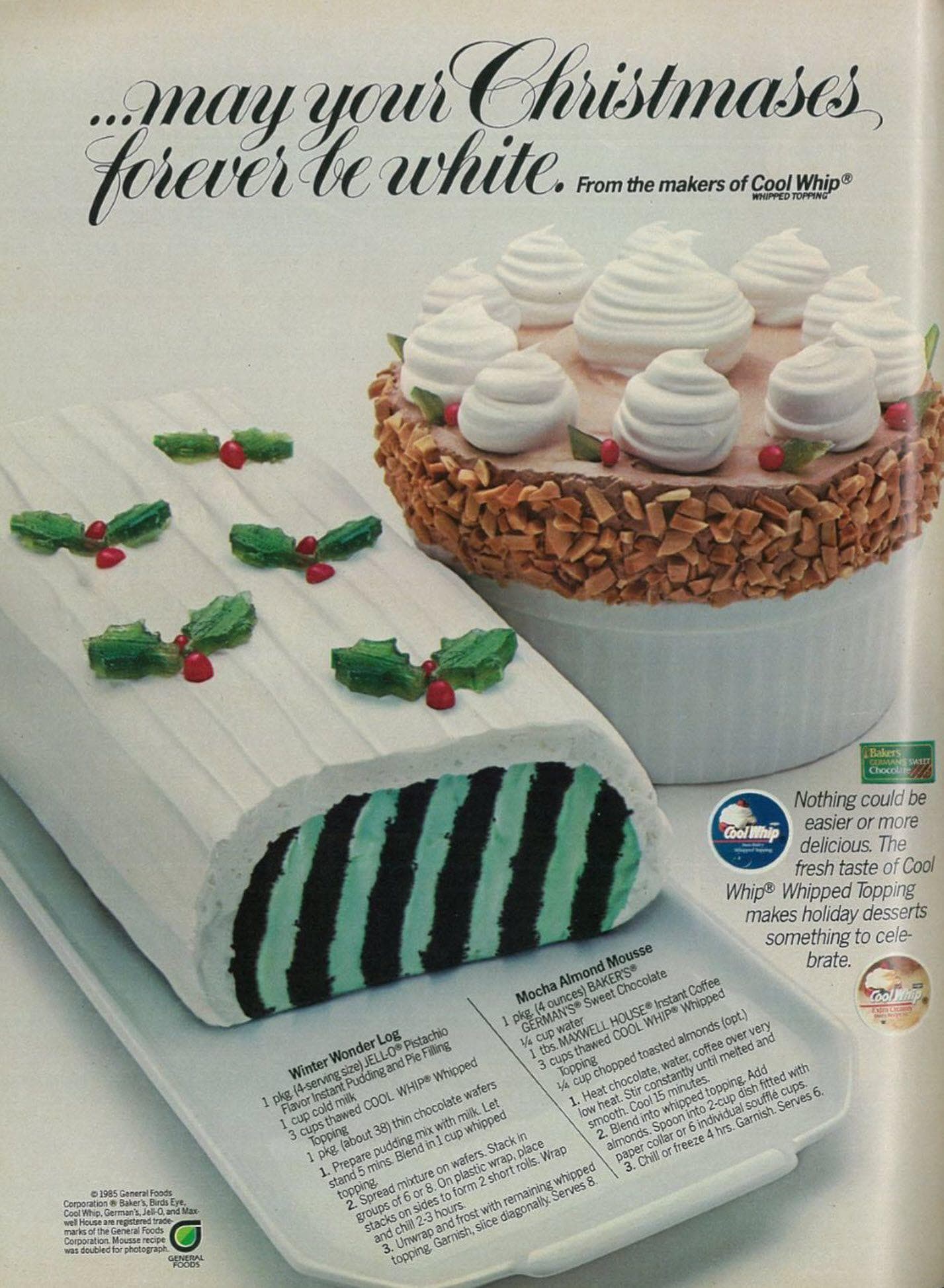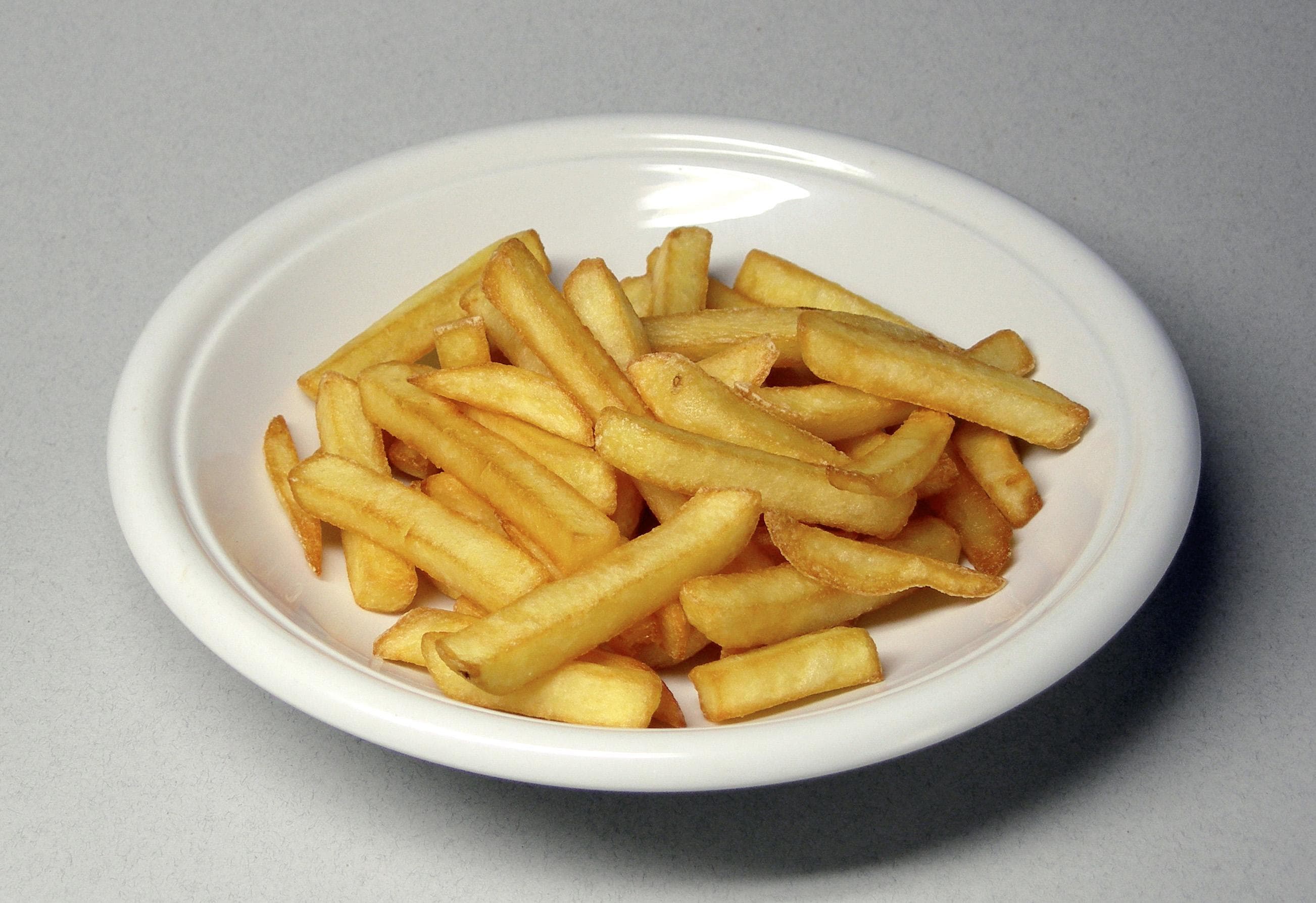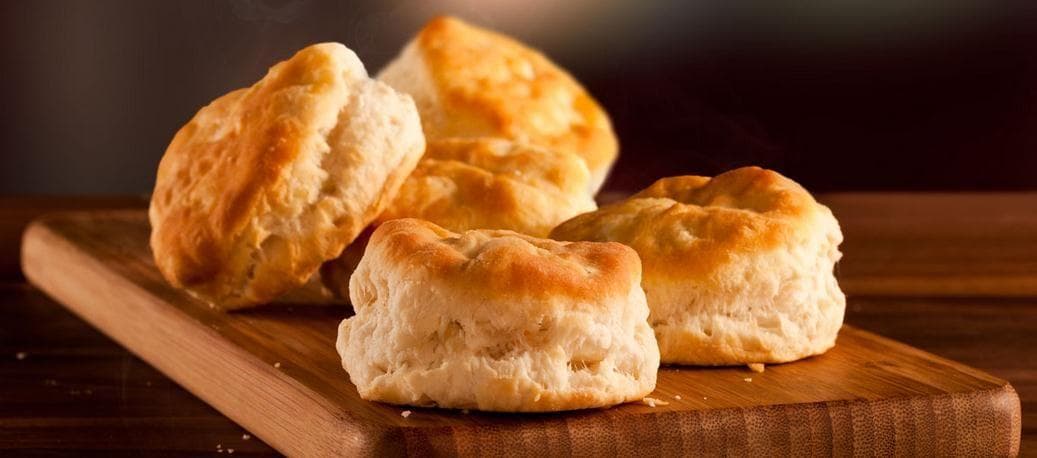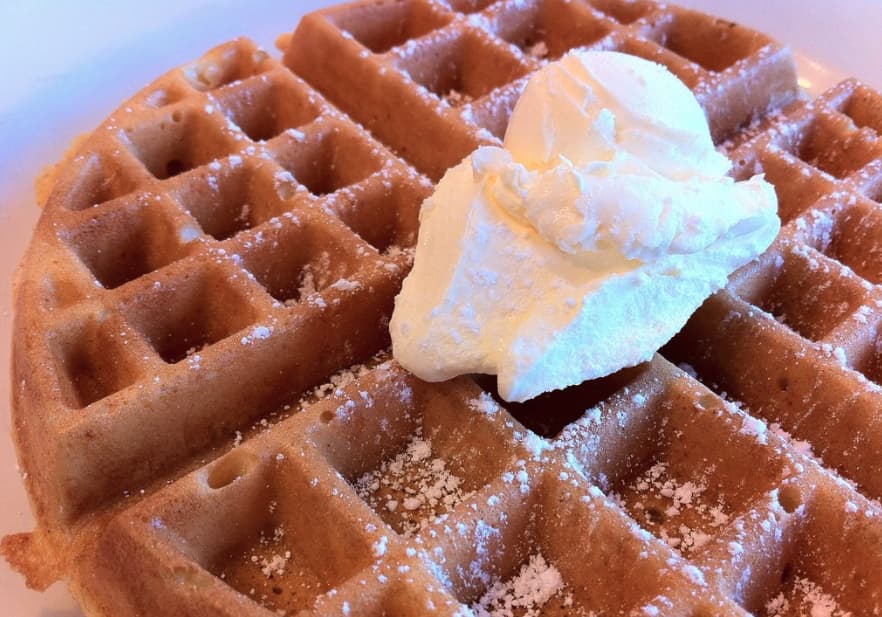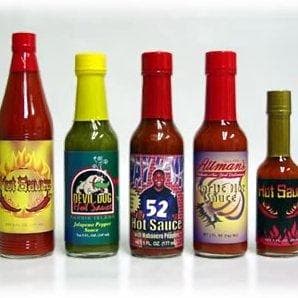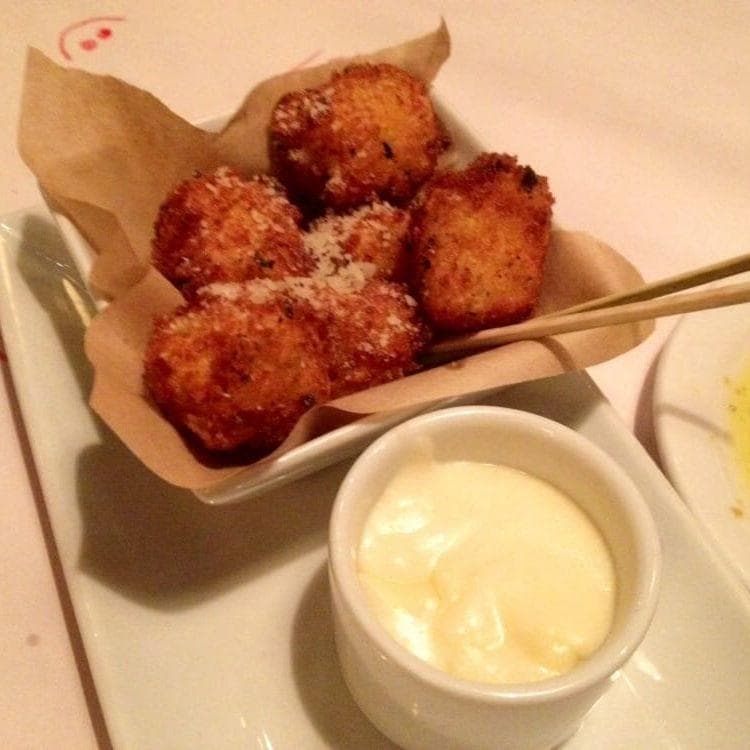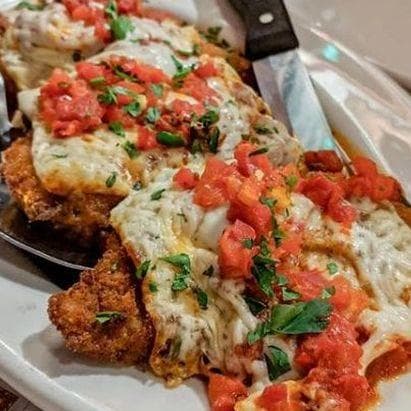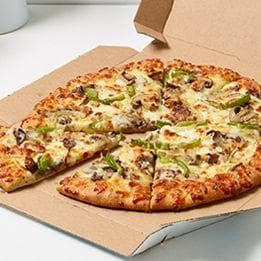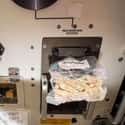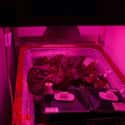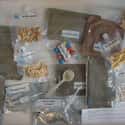-
(#1) Gravity Alters The Cooking Process
There are pros and cons to cooking outside of the Earth's gravity. On one hand, cooking in outer space totally ruins the boiling process. Jean Hunter, a professor at Cornell who studies how space affects cooking says that we need gravity in order to get a good boil going. Without gravity vapor doesn't separate from liquid and steam can't escape. She told io9:
"Rather than the water boiling like on earth where the bubbles rise to the top and release steam, what you’d get is more like a can of soda flowing over. It would be very difficult to cook with it."
-

(#2) Astronauts Love A Good Shrimp Cocktail... And Tobasco Sauce
A shrimp cocktail may not sound like the ideal meal to anyone on Earth. Sure, it's a nice appetizer, but having a shrimp cocktail in space? No thanks. That's what you would think, down on Earth with all your gravity and bread. But up in space, astronauts are mostly stuck eating bland food that's been re-hydrated... and they lose their sense of smell, which means they crave strong flavors to make up for it.
While many space foods — like spinach, crackers, and trail mix — are good for astronauts, they lack flavor. Vickie Kloeris, a preference lab manager, believes that the astronauts appreciate the dash of horse radish that's in the cocktail. If astronauts love spice, has anyone thought to send them up with extra packets of Taco Bell fire sauce? That'd be some stellar marketing.
-
(#3) Modern Astronauts Are Spoiled By Variety
At the moment astronauts have the option of enjoying 200 "core space foods" on their menu. Depending on how far they're going and how long they'll be in space greatly alters that menu, but it's still a far cry from what the O.G. astronauts had to eat. The 200 items include favorites like shrimp cocktail and thermostabilized mocha yogurt, and they're also sent with enough flour tortillas to stock a college dorm room.
In comparison, astronauts aboard the Gemini in the 1960s were stuck eating a few dehydrated meals that could safely be eaten from a pouch. The pouch contained all of the main components of the food and had a water valve on one end. Come dinner time, the astronauts would hook the valve up to a "water gun" and rehydrate the food.
-
(#4) A Sandwich In Space Is Nothing Like A Sandwich On Earth
Unfortunately for any foodie astronaut, if you make it to space you probably won't be able to enjoy your favorite meals while aboard the ISS or while you're in transit to Mars. If you wake up in the middle of the night with a hankering for a snack you'll have to eat an M.R.E. instead of a dagwood sandwich, unless you want to make your sandwich with a tortilla.
Because bread is so crumbly it can't safely be taken into space.The crumbs can get into control panels or they might even be inhaled by a sleeping astronaut causing them to choke — and nobody wants that. According to NASA, the tortillas they send along with astronauts are specially designed not to crumble and they can be used for anything from sandwiches to quesadillas.
-
(#5) Astronauts Are Experimenting With Growing Their Own Food
The biggest problem with sending food along into space with astronauts is that it takes up room and weighs down the shuttle. Obviously there's no oxygen in space, so it's hard to grow food while in orbit, but it's not impossible.
Astronauts are experimenting aboard the ISS by creating a small garden in a sealed chamber. Their first crop, "Outredgeous" lettuce (a red romaine) successfully grew and was edible, so they're adding new crops to their mini-garden.
-
(#6) Astronauts Get To Make Food Requests
It makes sense that if you're being shot into space for a lengthy period of time that you should get to make a request about some of the food you're going to get to eat. While not every food request complies with NASA's rules, most of the items that astronauts ask for are simple things that remind them of home.
The specialty items like Kook-Aid, snack cakes, and instant coffee are packed into a "bonus food container" and sent to space with the rest of the food items. It must be nice to have a taste of home when you're floating through a gravity free computer tube, 238,000 miles away from Earth.
-
(#7) Food Hacks Aboard The ISS Are Ingenious
Did you really expect some of the top scientists in the world to be okay with eating the same old stuff every day? Of course they're going to put their heads together to figure out how to pump up their meals. While he was in space, famous Canadian astronaut Chris Hadfield posted videos where he showed how he concocted a burrito out of some beef steak and red bean/rice MREs, tortillas (obvi), and hot sauce. And while that's impressive it's no Christmas dinner.
In 2008 Sandra Magnus, the flight engineer for Expedition 18, put together an entire kitchen and repurposed the food warmer, used foil packets, and gerry-rigged anything that she could get her hands on in order to make mesquite-grilled albacore steaks, cornbread stuffing, and crab salad. She admitted that the Christmas meal didn't compare to anything they could have made on Earth, but that still sounds pretty good.
Unfortunately the crew couldn't eat like that every day. Magnus noted that the grilled onions for the meal took three hours to cook in the wood warmer as opposed to the minutes that it would have taken back home.
-
(#8) Tortillas Are An Astronaut's Best Friend
The throughline for this list about food in space is the beauty of the tortilla. They're used in lieu of bread and they're incredibly malleable when it comes to snacking. Sandra Magnus, a member of the crew of STS-119 Discovery, wrote a blog for NASA where she touted the importance of tortillas to an astronaut. She wrote that a tortilla is "the vehicle with which to eat almost anything."
-
(#9) If You Want Good French Fries, Head To Jupiter
It turns out that the French fries on Earth are garbage compared to the fries that we could be having if our gravity was heavier than currently is. Denser? More dense? How does gravity work? Anyway, food scientists are researching how to make French fries in space and they've discovered that the key to a good crispy fry is a lot of gravity, but not too much.
The researchers told Food Research International, a real journal, that the stronger the gravity the more crispy the fry. Not only that, but a stronger gravity means that fries cook faster. They've found that by using a gravity that's three times stronger than Earth's, essentially the gravity of Jupiter, that they were able to make amazing French fries. Anything stronger than that caused a loss of structural integrity in the fry.
-
(#10) The Shelf Life Of Food In Space Is Minimal
Michele Perchonok, one of the culinary creatives behind developing and prepping food for astronauts in NASA's Institute of Food Technology, has noted that the hardest part of her job is creating foods that keep on a long mission. Everything she makes has to be able to last for at least a year without spoiling, and if the food is going to go to the ISS and back then it needs to be good for at least 18 months.
Unfortunately, at least 10 of the foods that astronauts eat lost their color, taste, and nutritional value in less than a year. She's currently working to try to find something that can last on a trip to Mars, which would take around five years, and she says that at that point NASA is only left with seven items. At the moment, her goal is to find items that can not only keep their flavor for a long-term mission, but also find something that can hold onto its nutrients for the trip.
-
(#11) Proper Coffee Is Finally Served In Space
Prior to 2015, astronauts in space had to endure drinking freeze-dried coffee from a bag with a straw, and many of them said they missed coffee the most. But Space-X delivered a microgravity espresso machine that was specially designed by an Italian engineering firm in cooperation with the Italian space agency and coffee giant Lavazza. Then, a 0-G coffee cup was also developed so that astronauts wouldn't have to drink their fresh ISSpresso out of a bag. The cup literally "goes with the flow," and collects the liquid in the lip of the cup. Physics and the properties of liquid and zero gravity do the rest.
-
(#12) Vitamin Pills Are Not The Wave Of The Future
In a The Jetsons vision of the future, we live in world where you can get an entire steak dinner in pill form. But according to researchers for NASA, giving astronauts a supplement instead of a meal isn't a perfect solution for keeping them healthy. NASA research has shown that the nutrients in vitamins disappear much quicker than they do in foods, so that makes the supplement future a no go.
At the moment there's no solution for stocking a craft that can travel to Mars, with food or supplements, so NASA has a long way to go before they figure out how to actually feed their astronauts.
Of course, there's always soylent, but the bland repetition of life in space combined with the bland mundanity of consuming soylent at every meal would probably affect an astronaut's morale the a negative extreme.
-
(#13) Canned Foods Are A No-Go In Space
If weight distribution wasn't an issue in space, then canned goods would be the way to go with sending astronauts on long-range missions. Non-perishable items can last for incredibly long periods of time, and while they may seem like an answer to NASA's problem with missions to Mars they actually create a bigger issue.
Weight and space are a major issue with food in manned aircraft. Foods that make it into space are packed in sterile containers that can be stacked and that doesn't need to be heated, whereas canned foods take up way more space than packs, and the astronauts would have to have a microwave to cook the meals. One day astronauts may be able to enjoy Spaghetti-Os, but not today.
-

(#14) Food Waste In Space Is Pretty Sustainable
If food waste is a problem on Earth, then it has to be an even bigger issue in space. If astronauts don't eat all of their meals the left over refuse can either get into control panel or it just go back and make the shuttle smell terrible — and no one wants a smelly shuttle. Rather than jettison their trash every day, astronauts hold onto it until they return to Earth.
As their craft returns to Earth, the trash is incinerated in the atmosphere, destroying the trash and saving NASA from a major cleaning bill.
-
(#15) One Day Astronauts May Be Able To Print Their Food
One solution for feeding astronauts on long-term missions is the possibility of 3D printing their food. In 2013 Austin, Texas-based company Systems and Materials Research Consultancy was awarded $125,000 to research exactly how practical it would be to send astronauts into space with a 3D printer specifically meant for food.
It would make things incredibly easy if astronauts could just jettison off to Mars with the ability to print their own food rather than have to pack food for a five-year trip that may not maintain its nutritional value for the entire time.
According to Anjan Contractor, a senior mechanical engineer at SMRC, they're approaching the different components of a meal as if they were different colors in a print out. He said, "The way we are working on it is, all the carbs, proteins and macro and micro nutrients are in powder form. We take moisture out, and in that form it will last maybe 30 years."
-
(#16) John Glenn's First Meal In Space Was Disgusting
Folks, it hasn't always been great to go to space. Sure, the magnificence of looking at Earth from above and the peace and quiet of the stars was always there, but the catering used to be terrible. When John Glenn was first sent to space in 1962, scientists weren't even sure if our bodies worked the same once we were in space. Glenn's first meal? A tube of applesauce and some sugar tablets. Yum.
After Glenn proved that our bodies handle nutrients the same way in space as they do on Earth NASA began working on the most basic of recipes for astronauts. Most of the early meals were pureed like the tube of beef and vegetables that Glenn would later "enjoy," but by the '70s, astronauts were digging into freeze-dried meals.
-
(#17) NASA Wants To Use Astronaut Waste To Make New Food
As you may know, astronauts aboard the ISS drink recycled urine in lieu of bringing pallets of La Croix aboard the station (you know how fast that stuff goes), and since this seems to be working NASA is looking into other forms of turning astronaut waste into a meal. Researchers at Penn State are attempting to turn astronaut fecal matter into edible meals.
So far, the researchers have been able to break down the waste with microbes that mimic anaerobic digestion. This kind of function works like our own digestive tracts and most importantly doesn't use oxygen. Team leader and Penn State professor Christopher House claims that the end result was "a little strange," and compared the edible material to "Marmite or Vegemite."
-
(#18) Even Astronauts Get Hyped For A Little Pizza In Space
In 2017, astronauts and cosmonauts aboard the ISS made pizzas, and filmed it for the rest of us down on Earth to enjoy. With zero-gravity in effect, they tethered their items down while they slung pies, and used ingredients that would stick well to the special crumb-minimizing crust.
New Random Displays Display All By Ranking
About This Tool
Astronauts‘ diet is a wide variety of foods, including not only fresh bread, fruits, chocolates, but also fries and meatballs in space food boxes, as well as condiments such as ketchup. Most of these foods are highly concentrated and liquid. Astronauts' foods are different from those on Earth. When eating, they need to float to the kitchen and squeeze the food into their mouth like toothpaste.
Many people are curious about the life of astronauts. This random tool introduces 18 astronaut foods. Maybe you know more about the details and appearance of these space foods, and you won't want to enjoy them.
Our data comes from Ranker, If you want to participate in the ranking of items displayed on this page, please click here.


